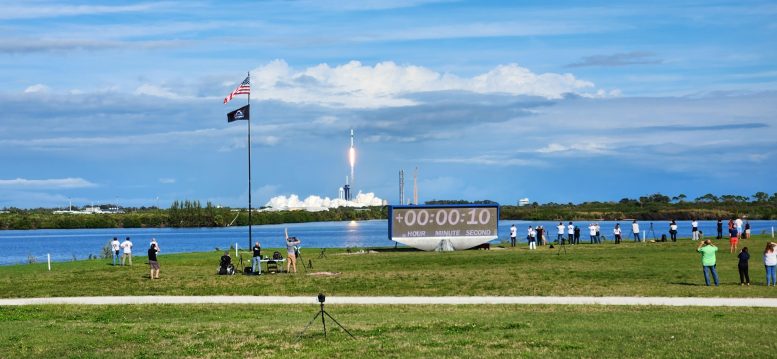
NASA’s SpaceX 26th commercial resupply services mission lifts off from Kennedy Space Center in Florida at 2:20 p.m. EST on November 26, 2022. Credit: NASA/Chris Swanson
T-0, ignition, and liftoff of the SpaceX Falcon 9 rocket and Dragon spacecraft at 2:20 p.m. EST, setting off on the company’s 26th mission to deliver supplies, equipment, and science materials to the International Space Station for NASA.
Several thousand pounds of important research, crew supplies, and hardware are on their way to the crew members aboard the International Space Station (ISS) following the 2:20 p.m. EST launch of NASA’s SpaceX 26th commercial resupply services mission from Kennedy Space Center in Florida on Saturday, November 26, 2022.
SpaceX’s Dragon spacecraft reached its preliminary orbit and its solar arrays have been deployed. A series of thruster firings are scheduled to allow Dragon to rendezvous with the space station on Sunday, November 27, at 7:30 a.m. EST. Live coverage of the docking will begin at 6 a.m. EST at https://www.nasa.gov/live.
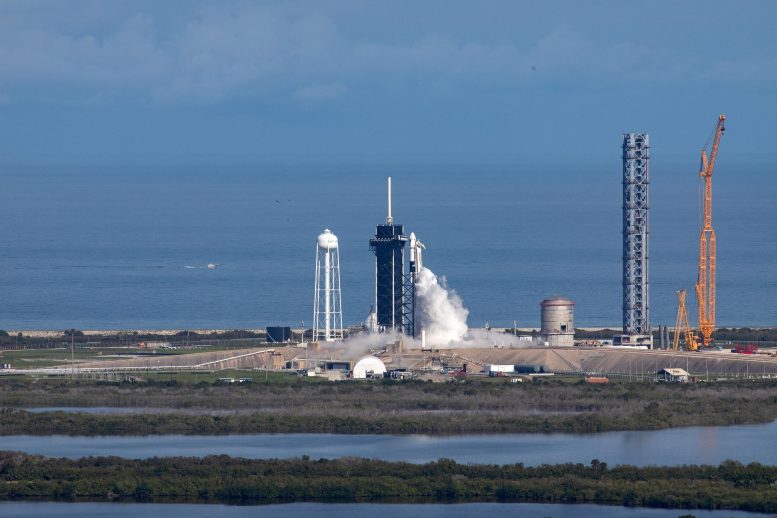
The SpaceX Falcon 9 rocket carrying the Dragon cargo spacecraft lifts off from Launch Complex 39A at NASA’s Kennedy Space Center in Florida on November 26, 2022, on the company’s 26th commercial resupply services mission for the agency to the International Space Station. Credit: NASA/Kim Shiflett
NASA astronauts Josh Cassada and Nicole Mann will capture the Dragon using the space station’s robotic arm and then install it on the station’s Harmony module. Dragon will spend about one month attached to the space station.
During SpaceX’s 26th commercial resupply services mission to the International Space Station for NASA, the Dragon spacecraft will deliver more than 7,700 pounds of supplies, equipment, and several science investigations to the crew aboard the station, including the next pair of International Space Station Roll Out Solar Arrays (iROSAs), which will increase the power on the space station.
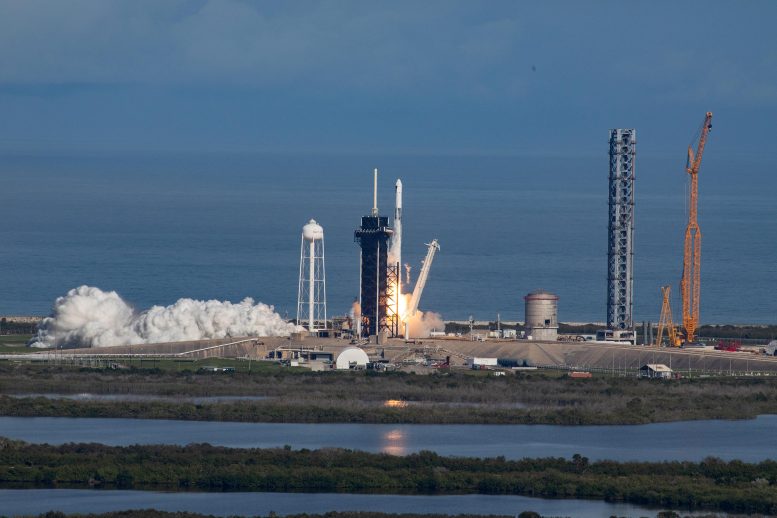
The SpaceX Falcon 9 rocket carrying the Dragon cargo spacecraft lifts off from Launch Complex 39A at NASA’s Kennedy Space Center in Florida on November 26, 2022, on the company’s 26th commercial resupply services mission for the agency to the International Space Station. Credit: NASA/Kim Shiflett
Among the science experiments on the way to the ISS are:
A study to grow dwarf tomatoes to help create a continuous fresh-food production system in space, as well as an experiment that tests an on-demand method to create specific quantities of key nutrients.
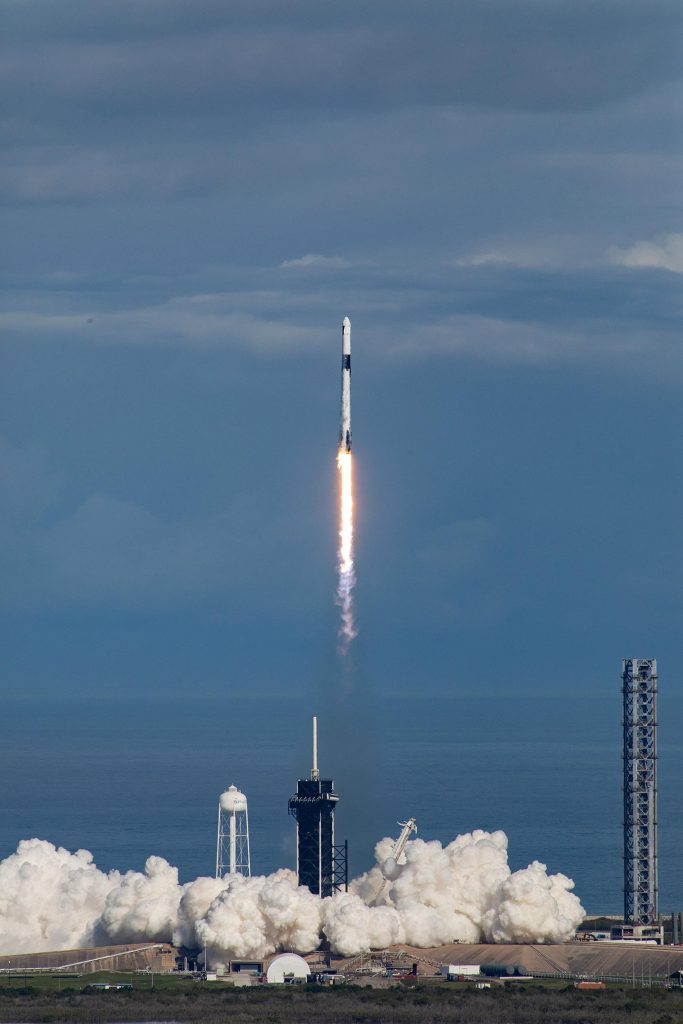
The SpaceX Falcon 9 rocket carrying the Dragon cargo spacecraft lifts off from Launch Complex 39A at NASA’s Kennedy Space Center in Florida on November 26, 2022, on the company’s 26th commercial resupply services mission for the agency to the International Space Station. Credit: NASA/Kim Shiflett
Other studies launching include a test of a microscope with potential deep space applications and Engineered Heart Tisues-2 (EHT-2), a study of cardiac health. This experiment builds on an investigation of 3D cultures aboard the space station in 2020. The previous experiment detected changes at the cellular and tissue level that could provide early indication of the development of cardiac disease. This study tests whether new therapies could prevent these negative effects from occurring.
Humans have occupied the space station continuously since November 2000. In that time, 263 people and a variety of international and commercial spacecraft have visited the orbital outpost. It remains the springboard to NASA’s next great leap in exploration, including future missions to the Moon under Artemis, and ultimately, human exploration of Mars.
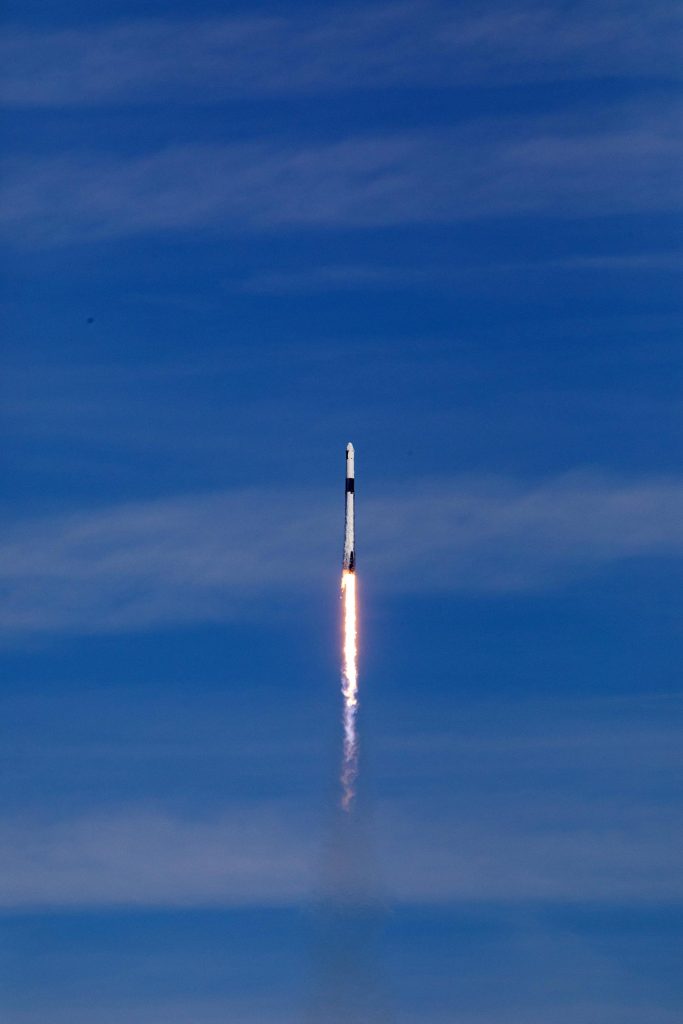
A SpaceX Falcon 9 rocket soars upward after its liftoff from Launch Complex 39A at NASA’s Kennedy Space Center in Florida on November 26, 2022, on the company’s 26th Commercial Resupply Services mission for the agency to the International Space Station. Credit: NASA/Kim Shiflett
Also hitching a ride on this mission are four CubeSats for NASA’s Educational Launch of Nanosatellites, or ELaNa. They will be deployed after launch. The first is Measurement of Actuator Response in Orbit (MARIO), which will add telescopes to an existing CubeSat in low-Earth orbit. The second is called petitSat. The CubeSat’s goal is to figure out how plasma bubbles and blobs affect communication, GPS, and radar signals. The third is called Scintillation Prediction Observation Research Task (SPORT), a joint mission between the U.S. and Brazil to investigate the conditions that lead to the formation of plasma bubbles.
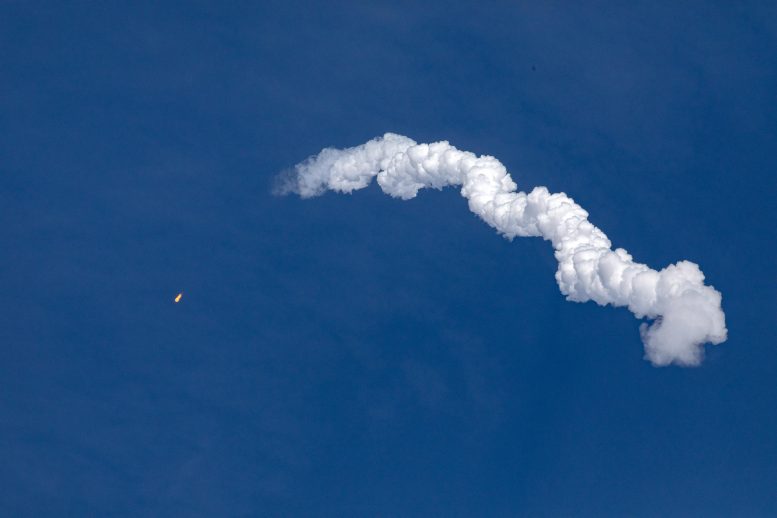
A SpaceX Falcon 9 rocket soars upward after its liftoff from Launch Complex 39A at NASA’s Kennedy Space Center in Florida on November 26, 2022, on the company’s 26th Commercial Resupply Services mission for the agency to the International Space Station. Credit: NASA/Kim Shiflett
The final CubeSat is called Thomas Jefferson High School for Science and Technology’s Research and Education Vehicle for Evaluating Radio Broadcasts (TJREVERB), developed by high school students, which will test the strength and consistency of iridium radio signals, the main way we communicate with CubeSats.
SpaceX’s 26th commercial resupply mission (CRS) launched to the International Space Station from NASA’s Kennedy Space Center in Florida on November 26. The Dragon spacecraft carries scientific experiments and technology demonstrations that explore growing plants in space, creating nutrients on-demand, in-space construction, and more. Credit: NASA


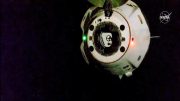


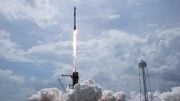
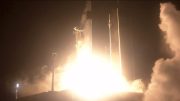
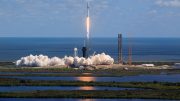
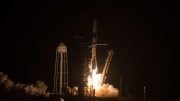
Female astronauts have fewer opportunities in space than men because of strict lifetime radiation exposure restrictions, A six-month mission on the International Space Station exposes astronauts to 40 times the average yearly dose of background radiation that a person would receive living on Earth,
A six-month mission on the International Space Station exposes astronauts to 40 times yearly dose of background radiation that a person would receive on Earth,
While the level of risk allowed for women becouse they have a lower threshold for space radiation exposure than men,
“Depending on when you fly a space mission, a female will fly only 45 to 50 percent of the missions that a male can fly,”
And what happened to putting the best candidates in space like we did in the ’60s when we had a head-to-head competition to determine who had the best ability for which Mission instead of trying to fill political agendas to put a person of color and a female on the moon!
https://www.science.org/content/article/new-nasa-radiation-standards-astronauts-seen-leveling-field-women (“New NASA radiation standards for astronauts seen as leveling field for women”)